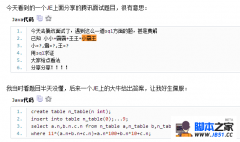canvas小画板之平滑曲线的实现
|
项目需求:需要实现一个可以自由书写的小画板 简单实现 对于熟悉canvas的同学来说,这个需求很简单,大致逻辑如下: 1)监听事件pointerdown,pointermove,pointerup 2)标记是否拖拽画线模式变量 isDrawing,在down事件时置为true,up的时候置为false 3)使用canvas的api,设置线条样式,调用绘制线条接口lineTo方法 短短几十行代码就能实现: <!doctype html> <html> <head> <meta charset=utf-8> <style> canvas { border: 1px solid #ccc } body { margin: 0; } </style> </head> <body style="overflow: hidden;background-color: rgb(250, 250, 250);touch-action: none;"> <canvas id="c" width="1920" height="1080"></canvas> <script> var el = document.getElementById('c'); var ctx = el.getContext('2d'); //设置绘制线条样式 ctx.strokeStyle = 'red'; ctx.lineWidth = 1; ctx.lineJoin = 'round'; ctx.lineCap = 'round'; var isDrawing;//标记是否要绘制 //存储坐标点 let lastX, lastY; document.body.onpointerdown = function (e) { console.log('pointerdown'); isDrawing = true; lastX = e.clientX; lastY = e.clientY; }; document.body.onpointermove = function (e) { console.log('pointermove'); if (isDrawing) { draw(e.clientX, e.clientY, lastX, lastY); } lastX = e.clientX, lastY = e.clientY; }; document.body.onpointerup = function (e) { if (isDrawing) { draw(e.clientX, e.clientY, lastX, lastY); } lastX = e.clientX, lastY = e.clientY; isDrawing = false; }; function draw(x, y, lastX, lastY) { ctx.beginPath(); ctx.moveTo(lastX, lastY); ctx.lineTo(x, y); ctx.stroke(); } </script> </body> </html> 实现效果如下图: 以上就简单的实现了画板功能,如果要求不高的用户可以使用,但一旦遇到有点要求的用户就无法交付这种产品,仔细看是线条折线感太强。 为什么会有折线感呢? 主要原因: 我们调用的api方法lineTo是两点连线也就是直线 浏览器对鼠标事件mousemove的采集是有采集频率的,并不是每个鼠标移动经过的每一个像素点都会触发事件。 当鼠标移动的越快,那么两点之间的间隔就越远,那么折线感就更明显。 如何能绘制平滑的曲线? canvas提供的api中是有现成接口的,贝塞尔系列的接口就能满足我们的要求,接下来我们讲一下使用二次贝塞尔曲线绘制平滑曲线。 quadraticCurveTo(cpx,cpy,x,y) 二次贝塞尔曲线接口需要四个参数,cpx,cpy是曲线的控制点,x,y是曲线终点。 有人问那曲线的起点在哪里?其实曲线的起点取决于上一操作状态,可以是moveTo的位置,或者是lineTo的位置,或者是贝塞尔的终点。 那么怎么调用quadraticCurveTo,参数怎么传呢? 我们需要找出关键位置,直接用例子告诉大家吧 1)假如我们用鼠标采集到ABCDEF六个点 2)取前面三个点ABC计算,BC的中点B1,以A为起点,B为控制点,B1为终点,那么利用quadraticCurveTo可以绘制出这样一条贝塞尔曲线 3)接下来计算CD的中点C1,以B1为起点,C为控制点,C1为终点,那么利用quadraticCurveTo可以绘制出这样一条贝塞尔曲线 4)以此类推,当到了最后一个点时以D1为起点,E为控制点,F为终点,结束贝塞尔绘制。 根据算法进行代码改造 OK我们介绍了具体算法的影响,那用该算法对我们前面的代码进行改造: <!doctype html> <html> <head> <meta charset=utf-8> <style> canvas { border: 1px solid #ccc } body { margin: 0; } </style> </head> <body style="overflow: hidden;background-color: rgb(250, 250, 250);touch-action: none;"> <canvas id="c" width="1920" height="1080"></canvas> <script> var el = document.getElementById('c'); var ctx = el.getContext('2d'); //设置绘制线条样式 ctx.strokeStyle = 'red'; ctx.lineWidth = 1; ctx.lineJoin = 'round'; ctx.lineCap = 'round'; var isDrawing;//标记是否要绘制 //存储坐标点 let points = []; document.body.onpointerdown = function (e) { console.log('pointerdown'); isDrawing = true; points.push({ x: e.clientX, y: e.clientY }); }; document.body.onpointermove = function (e) { console.log('pointermove'); if (isDrawing) { draw(e.clientX, e.clientY); } }; document.body.onpointerup = function (e) { if (isDrawing) { draw(e.clientX, e.clientY); } points = []; isDrawing = false; }; function draw(mousex, mousey) { points.push({ x: mousex, y: mousey }); ctx.beginPath(); let x = (points[points.length - 2].x + points[points.length - 1].x) / 2, y = (points[points.length - 2].y + points[points.length - 1].y) / 2; if (points.length == 2) { ctx.moveTo(points[points.length - 2].x, points[points.length - 2].y); ctx.lineTo(x, y); } else { let lastX = (points[points.length - 3].x + points[points.length - 2].x) / 2, lastY = (points[points.length - 3].y + points[points.length - 2].y) / 2; ctx.moveTo(lastX, lastY); ctx.quadraticCurveTo(points[points.length - 2].x, points[points.length - 2].y, x, y); } ctx.stroke(); points.slice(0, 1); } </script> </body> </html> 在原有基础上我们用了一个数组points保存鼠标经过的点,根据算法可知绘制贝塞尔曲线至少要用三个点,绘制过程中维护points数组。 实现效果如下,可见平滑了很多!
(编辑:ASP站长网) |

 MySQL IS NULL如何查
MySQL IS NULL如何查 最简单的创建 MySQL
最简单的创建 MySQL  网上看到的给大家分享
网上看到的给大家分享 MYSQL教程MySql 5.6.3
MYSQL教程MySql 5.6.3